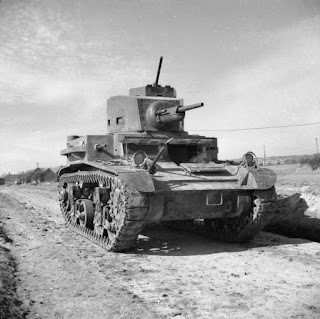Right - this is the sort of thing that makes me irritable when people talk about history. I decided to being with the truck. I used a base of a Ford F-150 as the model remains in production and dug up, through the NADA guides, a Ford F-150 model in 1978 that came as close as I could to $6800 in 1978 bucks.
It is a base model price of $5,300 (high retail) and comes with 4 wheel drive, a 460 V8 engine (man grunting noises can be inserted here), and factory installed air conditioning. It looks like this:
Now, I had to dig a bit to find a Ford F-150 today that actually cost $40,000 MSRP but I did find one, and it comes with some interesting features that probably aren't in the F-150 above, including: power windows, brake assist, power door mirrors, front fog lights, a low tire pressure warning system, a security system, 6 disc CD player, remote keyless entry, speed-sensing steering, a front anti-roll bar, electronic stability control, power steering, traction control, and enough airbags to snuggle you on all sides if you hit something.
Now if we use the Consumer Price Index Inflation calculator the buying power of $6800 in 1978 translates into about $25,326.77.
For pretty close to that price you CAN get the truck pictured above, sans the boat - a base model Ford F-150 which only comes with a single-row cab, rear wheel drive, an aluminum body, and a base 2.7 liter EcoBoost V6. If you are willing to go up to $29,000 roughly, you can get the man-grunting V8. So comparing the man-grunting V8s you find that in reality the price difference is the man-grunting V8 costs about 14% more today than it did in 1978. (But I'd add you still get a lot of nice features for that markup, including the snuggle-bundle of airbags.)
But, I can hear you saying, gasoline is pretty consistent and look at how much THAT has gone up in price since 1978. Well, again gasoline is no longer gasoline, thanks to the additions of scrubbing detergents, more precision blending, and synthetics but we'll go along and say "gas is gas." The 1978 base price per gallon: $0.60. Translated into today's dollars per gallon: $2.23. (Again, Consumer Price Index Inflation calculator.)
Per CNN Money and its gas price index there are spots in the U.S. were the average price for standard octane gasoline per gallon is above $2.23 - California ($2.47), Alaska ($2.34), and Hawaii ($2.63). Congratulations, if you live in those three states you can bitch that the price of gasoline is above inflation from 1978! For everyone else in the United States guess what, gas is cheaper in 2017 per gallon, adjusted, than it was in 1978. (For the record according to the Bureau of Labor Statistics the actual average price of unleaded gasoline in 1978 in the U.S. ranged from $0.65 to $0.71 per gallon, which translated to modern dollars means only Hawaii can still complain.)

Yeah but the wage gap, now that is valid, he made $10 per hour in 1978 and now he makes $17 an hour, that is hardly fair. In that our meme is correct, in 2017 dollars a wage of $10 per hour would translate to an inflation adjusted wage of $37.25. You'd see a worker with that wage making $74,500 per year (2000 hour work year) against $34,000 at $17 per hour. But comparing those wages isn't quite fair, so lets do minimum wage.
1978 minimum wage, per the U.S. Department of Labor (covered professions) - $2.65 per hour. In modern buying power: $9.87 per hour. Current U.S. federal minimum wage: $7.25 per hour. (About 36% below where it should be if the minimum wage had kept up with inflation.)
But the wage he mentioned above is almost half the modern wage, so what happened?
To really understand we need a product that is not limited by shipping/spoilage issues, that requires relatively low-skill to assemble, is non-capital equipment heavy to produce, and has remained relatively consistent in design since 1978. Meet Wrangler Jeans, made by the same company, to roughly the same quality specifications, since 1978.
Price of one pair of Men's Wrangler Jeans circa 1978: $5.98 per pair
Price of one pair of Men's Wrangler Jeans circa 2017 adjusting 1978 bucks for inflation: $22.27
Actual price per Walmart 2017: $16.77
The difference is about 33% and that difference covers several sins: higher corporate profits, transportation for foreign assembly, and cheaper labor.
See since the 1980s onward the United States has pretty much embraced the idea that consumers don't want to pay the level of costs for goods necessary to ensure that low-skill factory workers could afford nice three bedroom homes and shiny new Ford F-150 trucks.
You may not agree with it, you may not like it, and I've been reading up recently on why it has happened in several different books, but that cornerstone lesson seems in place. If you want a United States where a guy who sews jeans can afford a 3 bedroom house and a nice truck, you are going to be spending about 32% per unit for that pair of lovely jeans you see above you.
Sources: Consumer Price Index
inflation adjuster (US Department of Labor), NADA guides
entry on 1978 Ford F-150, 2013 TED Economics
presentation on gasoline prices, U.S. Department of Labor
table of minimum wage rates, 1978
guide to prices by the Morris County library, Wikipedia
entry on Wrangler Jeans (timeline of corporate events)








































